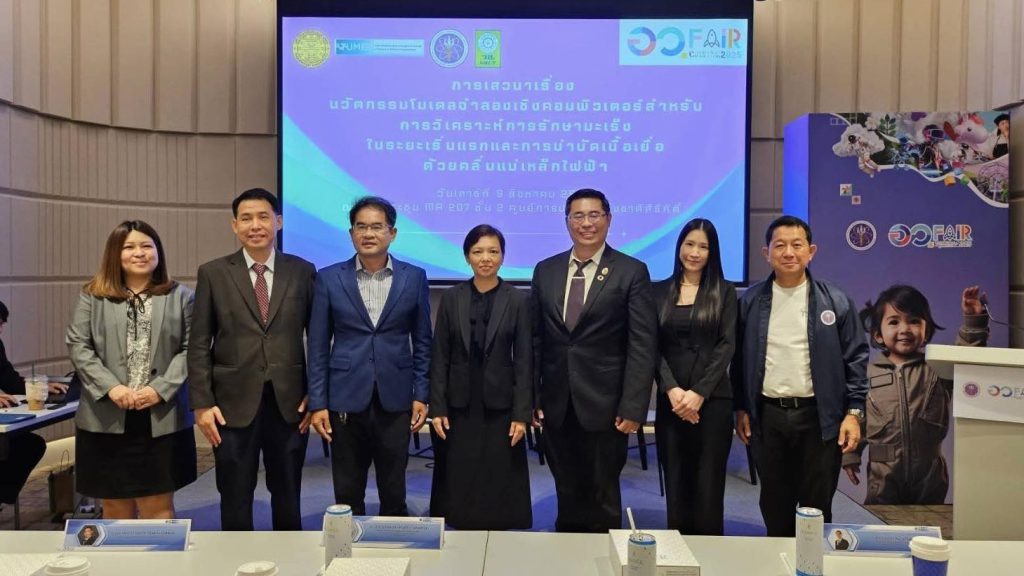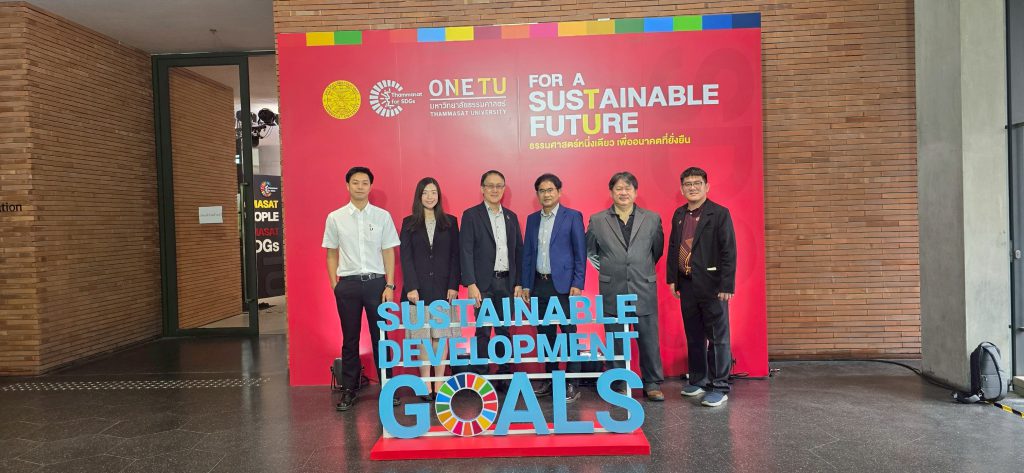อว.แฟร์: SCI POWER FOR FUTURE THAILAND 2025
9 สิงหาคม 2568 จัดการการเสวนา หัวข้อ นวัตกรรมโมเดลจำลองเชิงคอมพิวเตอร์สำหรับการวิเคราะห์การรักษามะเร็งในระยะเริ่มแรกและการบำบัดเนื้อเยื่อด้วยคลื่นแม่เหล็กไฟฟ้า โดยจัดขึ้นภายในงาน อว.แฟร์ : SCI POWER FOR FUTURE THAILAND มหกรรมส่งเสริมการใช้ประโยชน์จากองค์ความรู้ วิจัย และนวัตกรรม (อววน.) เพื่อขับเคลื่อนเศรษฐกิจไทยอย่างยั่งยืนด้วยพลังสหวิทยาการ ระหว่างวันที่ 9 – 17 สิงหาคม 2568 ณ ศูนย์การประชุมแห่งชาติสิริกิติ์ ศาสตราจารย์ ดร.ผดุงศักดิ์ รัตนเดโช ได้กล่าวถึงการวิเคราะห์/ตรวจจับ และรักษามะเร็งในระยะเริ่มแรก โดยการใช้สนามแม่เหล็กไฟฟ้าที่มีความถี่และระดับความแรงที่เหมาะสม เพื่อกระตุ้นหรือยับยั้งการทำงานของเซลล์ และเพิ่มความแม่นยำในการรักษาช่วยลดความเสี่ยงและผลข้างเคียงที่อาจจะเกิดขึ้น ทำให้การรักษามีประสิทธิภาพมากยิ่งขึ้น นอกจากใช้ นวัตกรรมนี้รักษาโรคมะเร็งแล้ว ยังสามารถนำมาใช้ในด้านความงามการกำจัดขนได้อีกด้วย พร้อมกันนี้ ยังได้รับเกียรติจากผู้ทรงคุณวุฒิ มาร่วมเสวนาแลกเปลี่ยนความรู้ ในหัวข้อ “นวัตกรรมโมเดลจำลองเชิงคอมพิวเตอร์สำหรับการวิเคราะห์ การรักษามะเร็งในระยะเริ่มแรก และการบำบัดเนื้อเยื่อด้วยคลื่นแม่เหล็กไฟฟ้า” ได้นำเสนอความก้าวหน้าทางการแพทย์ที่ผสานเทคโนโลยีคอมพิวเตอร์เข้ากับการรักษามะเร็งอย่างมีประสิทธิภาพ โดยเน้นการใช้แบบจำลองคอมพิวเตอร์ช่วยวิเคราะห์และวางแผนการรักษาได้อย่างแม่นยำมากขึ้น เช่น การใช้ซอฟต์แวร์ช่วยวางแผนการยิงเลเซอร์เพื่อรักษามะเร็งผิวหนัง และการจำลองการฉายรังสีด้วยภาพ MRI เพื่อเพิ่มความปลอดภัยในการรักษา



